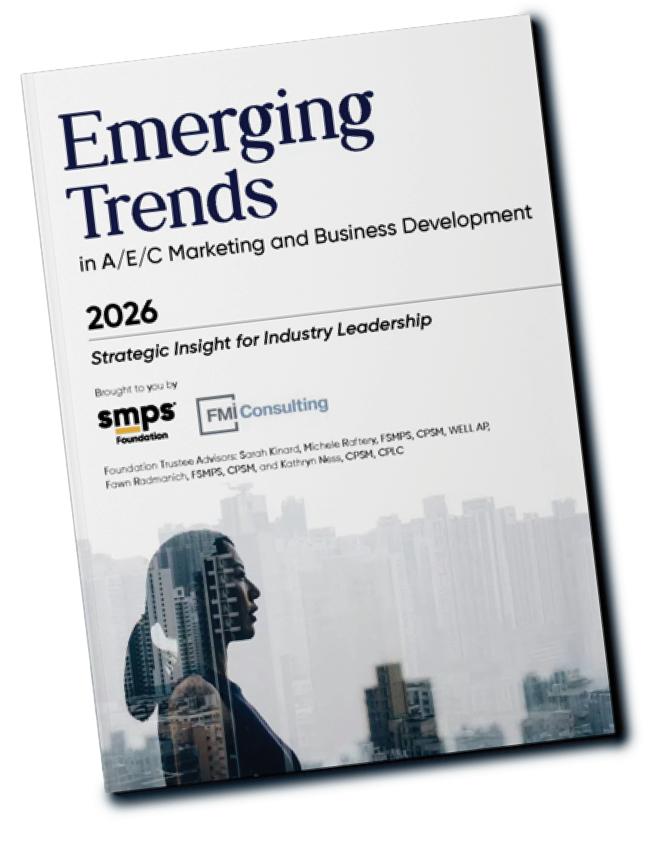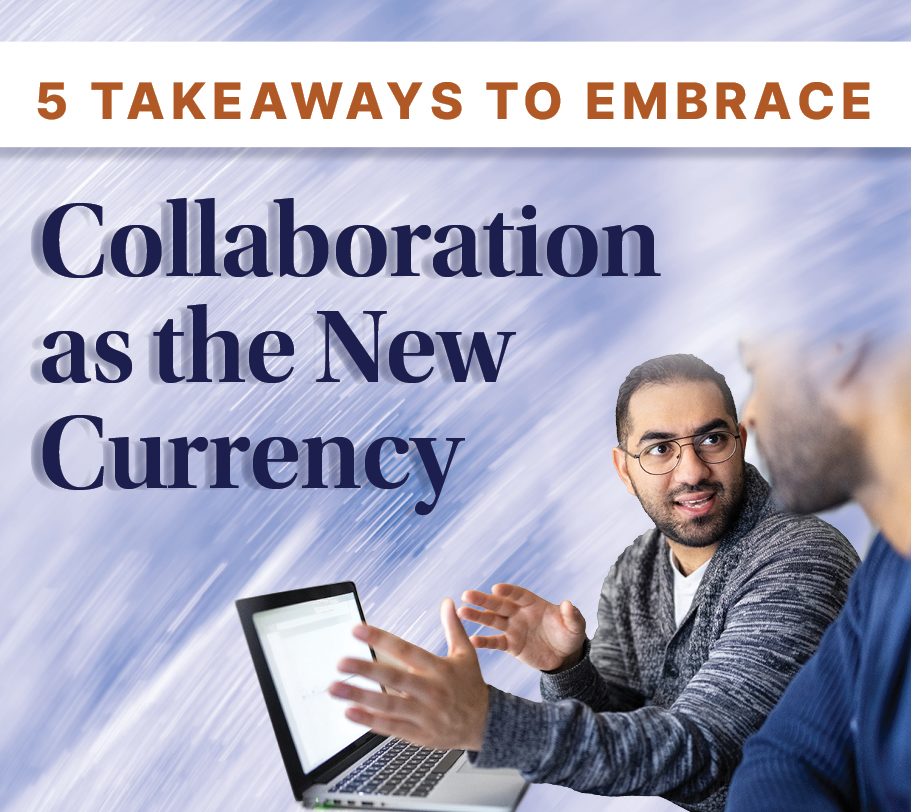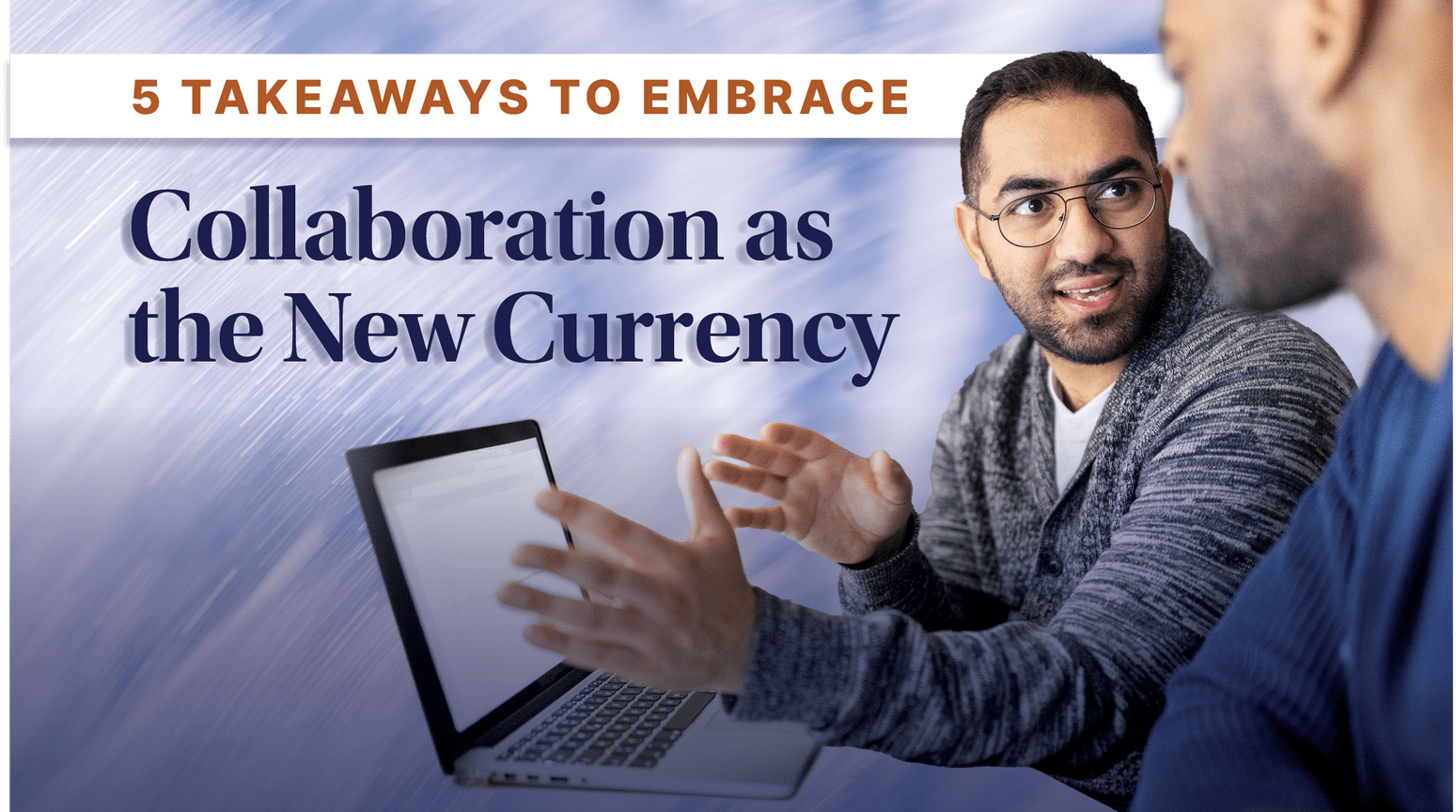



About

IN EVERY ISSUE
1.
PRESIDENT'S MESSAGE
Let’s Work Together and Make Some Magic!

2.
Publisher’s Message
Collaboration You Can Feel

3.
FROM THE EDITOR
Collaboration Opens the Door for Shared Leadership

Calendar of Events
4.

FEATURES
5.
Preparing for a Smooth Handoff: The tender, scary, and rewarding process of working towards a successful leadership transition

6.
The unexpected effect of AI on creativity: Protecting the human need to create nurtures motivation.

7.
5 Takeaways to Embrace – Collaboration as the New Currency

8.
How Collaborative Improv Comedy Techniques Can Enhance Client Engagement and Business Development

COLUMN
12.
2025 MCA AWARDS
The 2025 MCA Judges

13.
2025 MCA AWARDS
The 2025 SMPS Marketing Communication Awards Winners

14.
2025 MCA AWARDS
HITT Contracting Wins MCA Best of Show for High-Voltage Year-End Meeting

15.
2025 MCA AWARDS
Carollo’s I-FLOAT Campaign Wins MCA People’s Choice at Amplify A|E|C

16.
2025 MCA AWARDS
Interview with Brad Thurman: 2025 Weld Coxe Marketing Achievement Award Recipient

17.
2025 MCA AWARDS
SMPS Names 2025 Chapter President of the Year: Olivia Farquharson, CDMP, PCM

18.
2025 MCA AWARDS
SMPS Recognizes Of the Year Awards at Amplify A|E|C

19.
2025 MCA AWARDS
Congratulations to the 2025 Class of Fellows

20.
2025 MCA AWARDS
Congratulations to the New CPSMs

Collaboration isn't a new concept, yet it’s increasingly becoming an important factor in how teams are being assessed and hired.
In the recently released Emerging Trends report from the SMPS Foundation and research partner FMI, we asked marketing and business development professionals, principals, and other leaders in the architecture, engineering, construction (A/E/C) industry what they saw as trends in the ways that clients are buying services.
I’ve spent the better part of my career helping teams navigate complexity—whether it’s aligning teams on a multi-billion-dollar infrastructure pursuit or facilitating strategic workshops with a variety of A/E/C professionals. And if there’s one truth that’s become increasingly clear, it’s this: working as a collaborative team isn’t just a nice-to-have anymore. It’s a demonstration of how the team is set up to solve the problems that inevitably arise from time to time.
When the Emerging Trends report was published, Trend #1, Collaboration Is the New Currency: Why Clients Expect More Than Services, resonated deeply with me. It reflects what an increasing number of clients have been requesting in the interview stage for the procurement, especially if the delivery method is an alternative one. The responses from the survey indicated a shift in how clients evaluate firms, and not just in what they do, but in how they think, how they engage, and how they collaborate.
Here are my top five takeaways on how clients are evaluating, buying, and making decisions.

Clients Are Choosing Strategic Partners Over Service Providers
Gone are the days when technical expertise alone won the job. Today’s clients are looking for firms that can share risk, offer insight from lessons learned, and navigate complexity with them—not for them. This shift is especially pronounced in high-stakes, resource-constrained environments like public infrastructure and industrial projects.
I’ve seen this firsthand in workshops with project teams. When we introduce models like “The 6 Types of Working Genius™,” it’s not just about team dynamics—it’s about building a shared language for collaboration. Clients notice when teams show up aligned, proactive, and ready to co-create solutions. That’s what partnership looks like.

Clients notice when teams show up aligned, proactive, and ready to co-create solutions. That’s what partnership looks like.”

Collaborative Delivery Models Are Gaining Ground
Design-Build, Construction Management at Risk (CMAR), and Public/Private Partnerships (P3s) are no longer just project delivery methods—they’re strategic frameworks that embed collaboration from day one. According to the survey responses, nearly two-thirds of industry leaders expect design-build delivery to continue to increase, with CMAR and P3s close behind. These models enable early alignment, shared accountability, and faster decision-making—all things clients now prioritize.
In California, where I’m based, we’re seeing legislation and procurement trends that favor these models. But it’s not just about policy, it’s about mindset. Firms that embrace these models as opportunities for deeper engagement, rather than just contractual structures, are the ones building lasting client relationships.

Generational Shifts Are Redefining Expectations
This one hit close to home. As Millennials and Gen Z step into decision-making roles, they’re bringing new values to the table: trust, inclusion, digital fluency, and purpose-driven partnerships. These aren’t buzzwords; they’re buying criteria based on their values.
The next generation of clients are asking questions that go beyond scope and schedule. They want to know about a firm’s culture, its stance on sustainability, and its approach to diversity. They’re not just evaluating qualifications; they’re evaluating alignment.
And they’re doing it digitally. Cold calls and static brochures simply don’t cut it anymore. Firms need intuitive websites, responsive proposal templates, and authentic digital engagement. If your brand doesn’t show up well online, it may not show up at all.

As Millennials and Gen Z step into decision-making roles, they’re bringing new values to the table: trust, inclusion, digital fluency, and purpose-driven partnerships.”

AI and Technology Are Elevating the Role of Collaboration
Artificial intelligence is changing the game. Clients are using AI-assisted tools to evaluate and score proposals, filter vendors, and assess qualifications at scale. That means boilerplate content and recycled messaging are liabilities, not assets.
However, here’s the opportunity: firms that embrace “collaborative intelligence”—the synergy of human expertise and AI capabilities—can co-create solutions in real-time. I’ve seen teams use digital platforms not just to communicate, but to build clarity, responsiveness, and trust.
Marketing and BD teams have a critical role here. It’s not enough to promote services—we have to demonstrate how we think, how we solve problems, and how we collaborate. That’s what differentiates us in an AI-powered landscape.

Transactional Mindsets Are a Liability
This one might be the most urgent. Firms that cling to transactional delivery models—generic proposals, last-minute pursuits, capability lists—are at risk of becoming commoditized. And in today’s market, commoditized means expendable.
The cost of a transactional mindset isn’t just losing a project—it’s losing positioning, reputation, and long-term growth. Teams are losing pursuits not because they lack expertise but because they failed to engage early, build trust, or demonstrate relevance.
The firms that win are the ones that lead with insight, not just credentials. They tell impact stories, initiate strategic conversations, and show up as valued advisors, not as vendors.
Final Thoughts: Collaboration as a Market Position
Collaboration isn’t just a delivery method—it’s a market position. It’s a growth strategy. It’s a differentiator that clients can feel.
When we embed collaboration into our culture, our messaging, and our client experience, we don’t just win projects—we build trust that endures. And in a time where clarity is the ultimate differentiator, that trust is everything.
So let’s stop selling services. Let’s start building partnerships. Because in today’s A/E/C marketplace, collaboration is the new currency—and it’s the one that clients are most willing to invest in.

Emerging Trends in A/E/C Marketing and Business Development
The SMPS Foundation and FMI Consulting have launched a critical research initiative aimed at capturing emerging marketing and business development trends in the US and Canada.
As a Facilitator/Strategist at HNTB, Kathryn Ness, CPSM, CPLC brings energy and vitality to the team, significantly promoting the mission of collaboration and support for positioning and winning work. With more than 25 years of experience in the A/E/C industry, Kathryn brings an in-the-trenches perspective on how things work and, more importantly, how things can work better. As a lifelong learner, she is a Certified Professional Services Marketer (CPSM), Certified Professional Life Coach (CPLC), and a facilitator of the 6 Types of Working Genius. Kathryn is a frequent presenter and facilitator, presenting at national and regional industry conferences. She served as a past chapter president for the SMPS Sacramento Chapter, and currently serves as a Trustee on the SMPS Foundation board.

Connect on Linkedin










